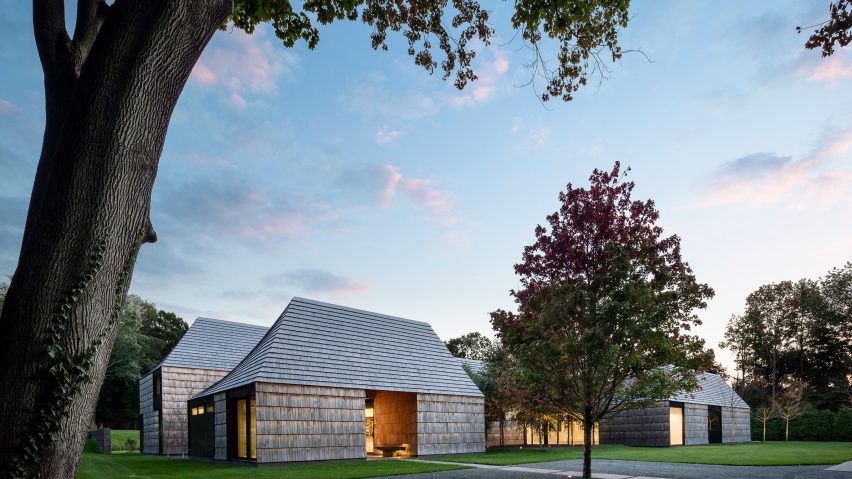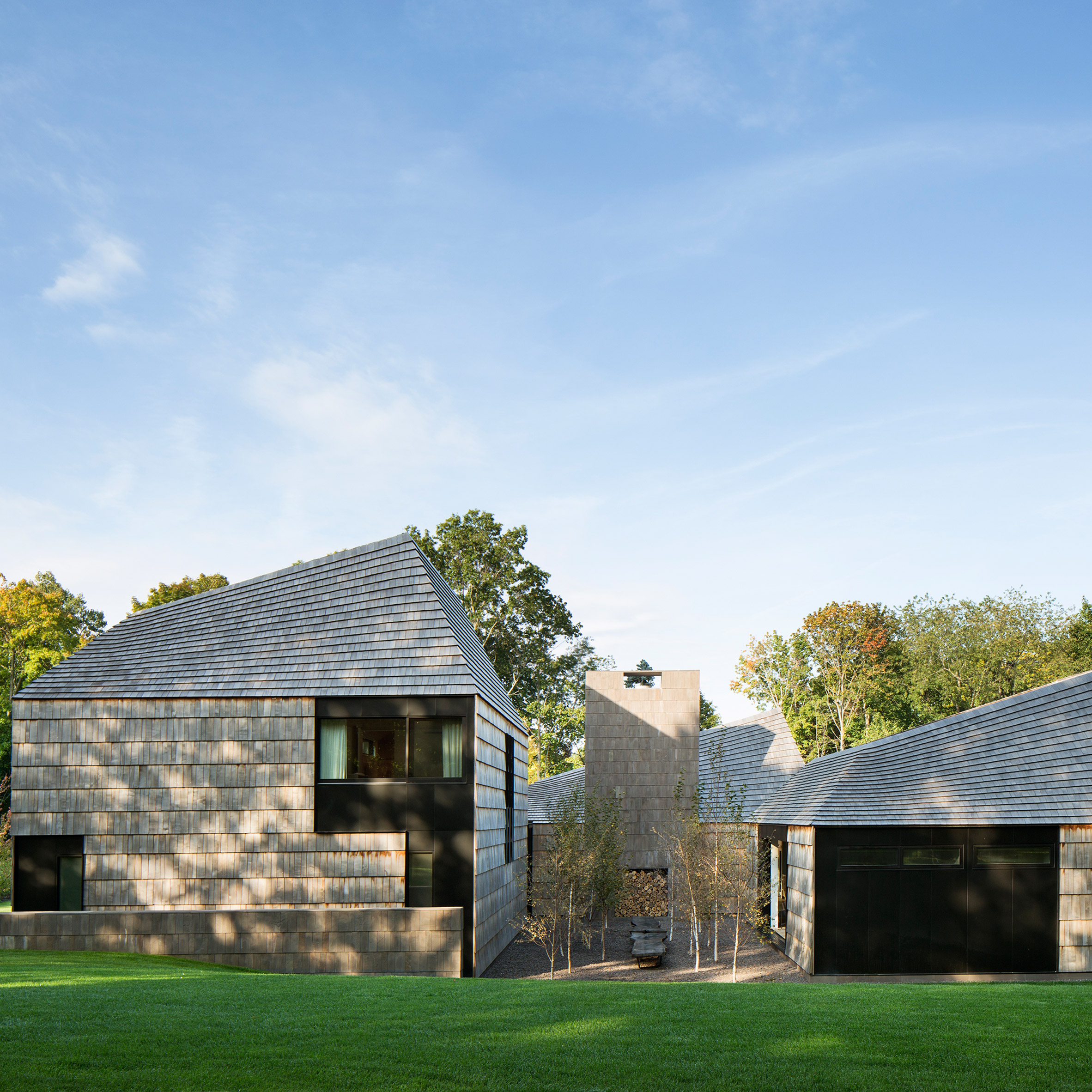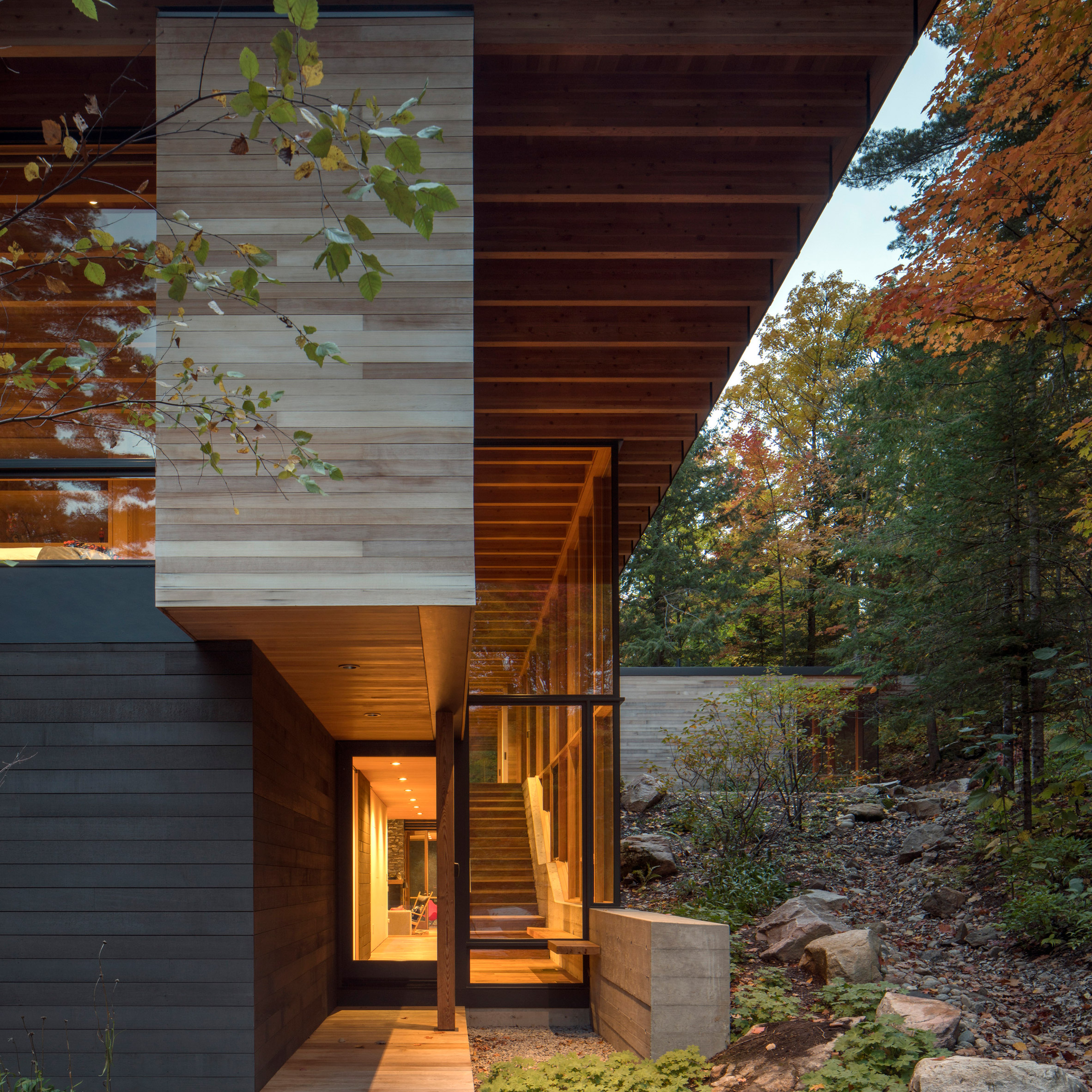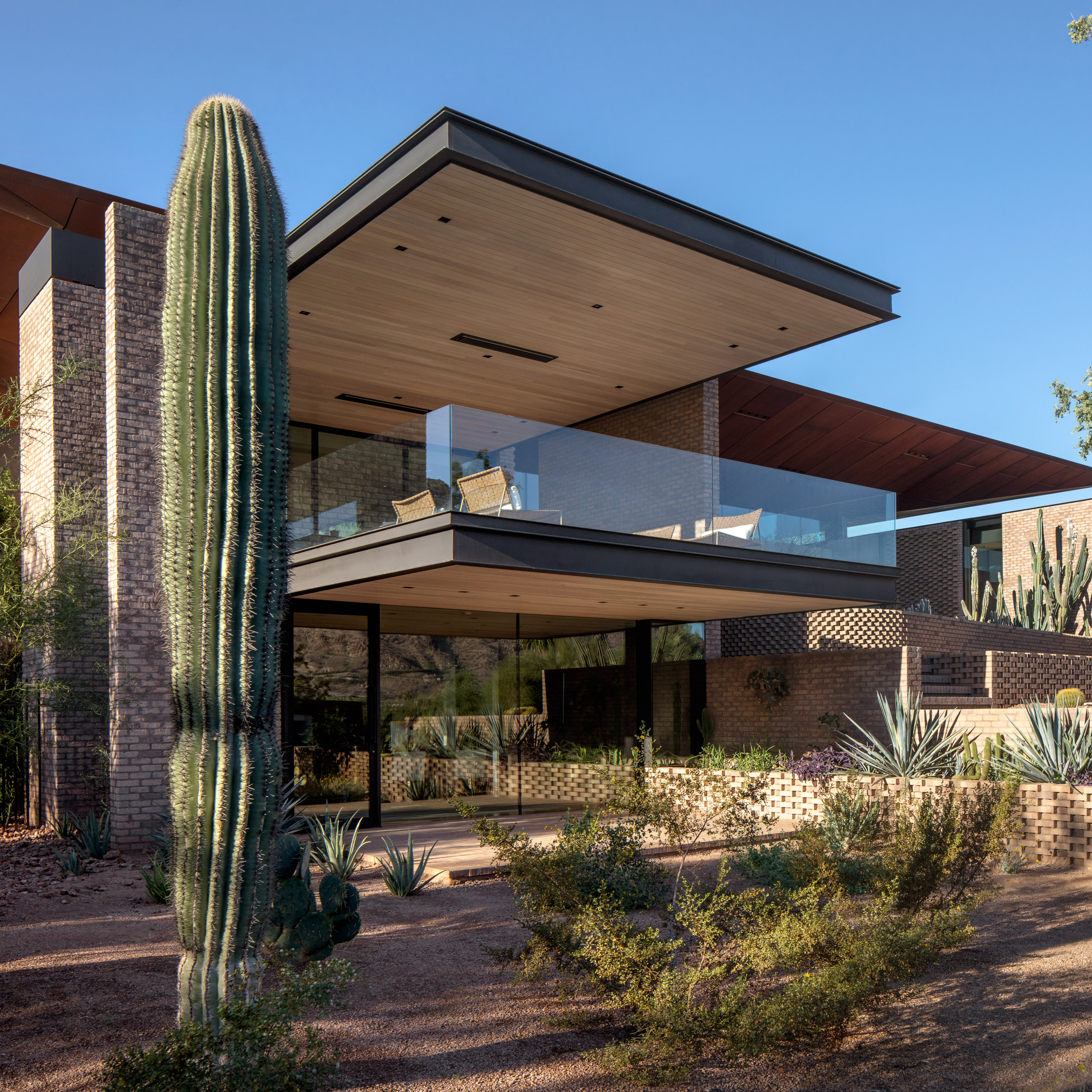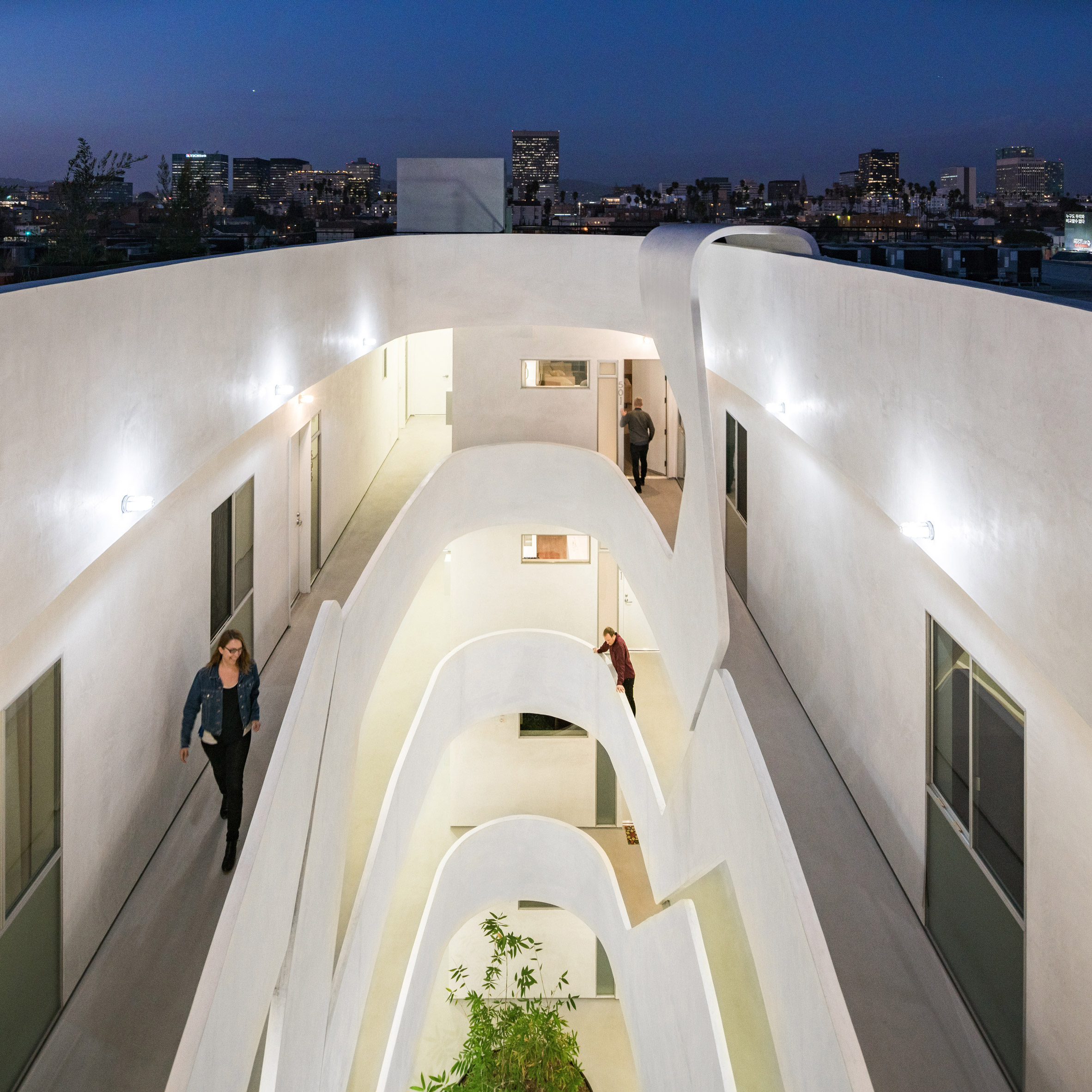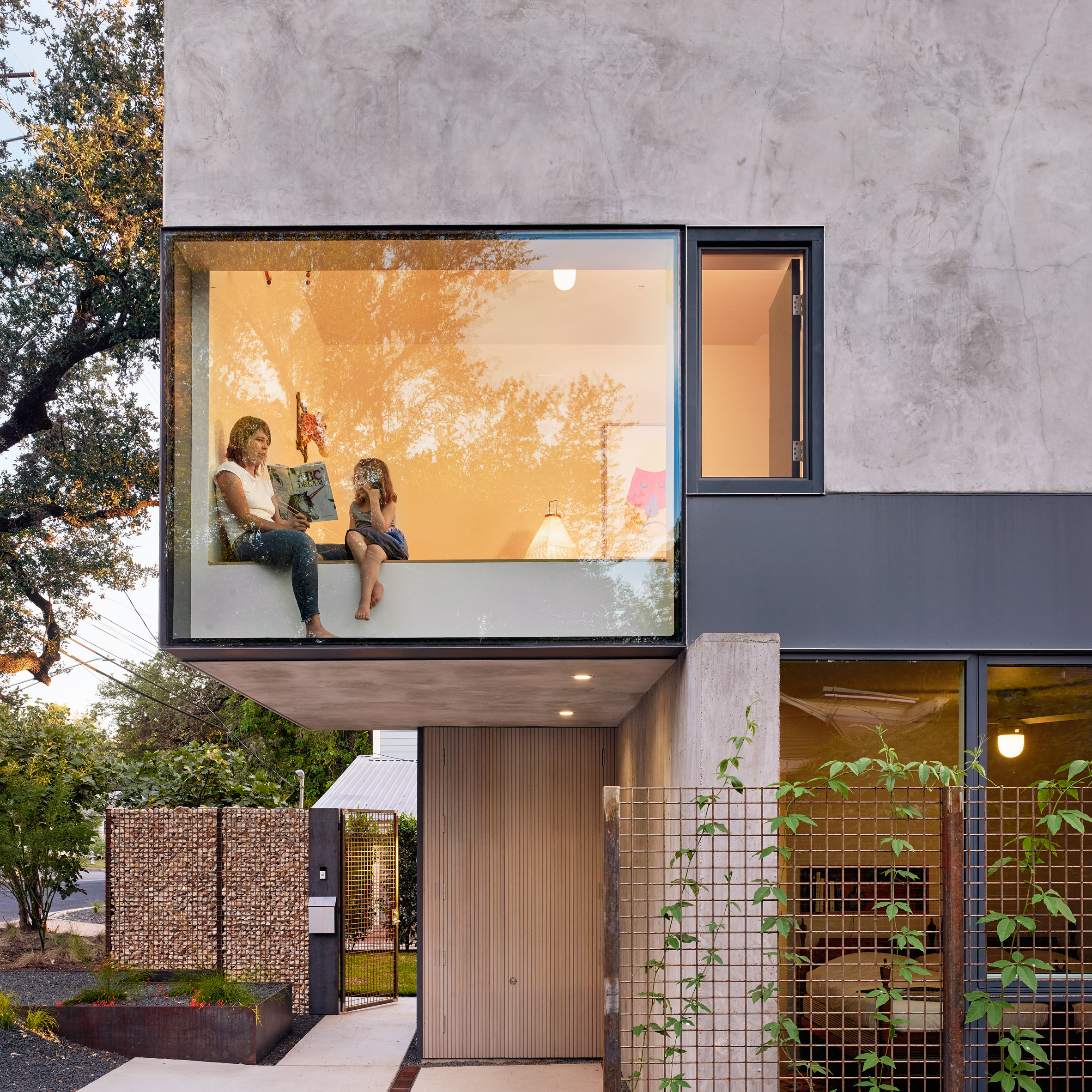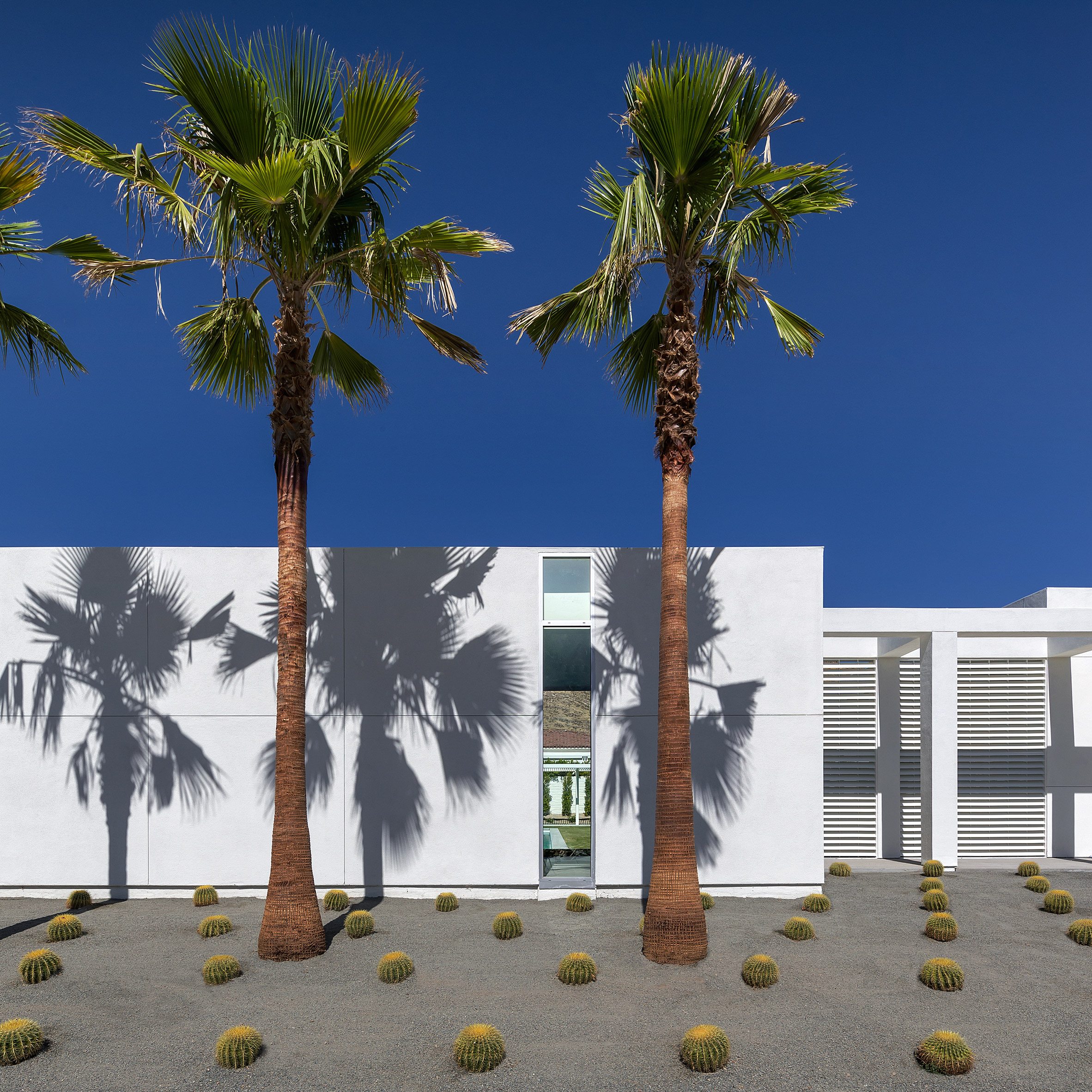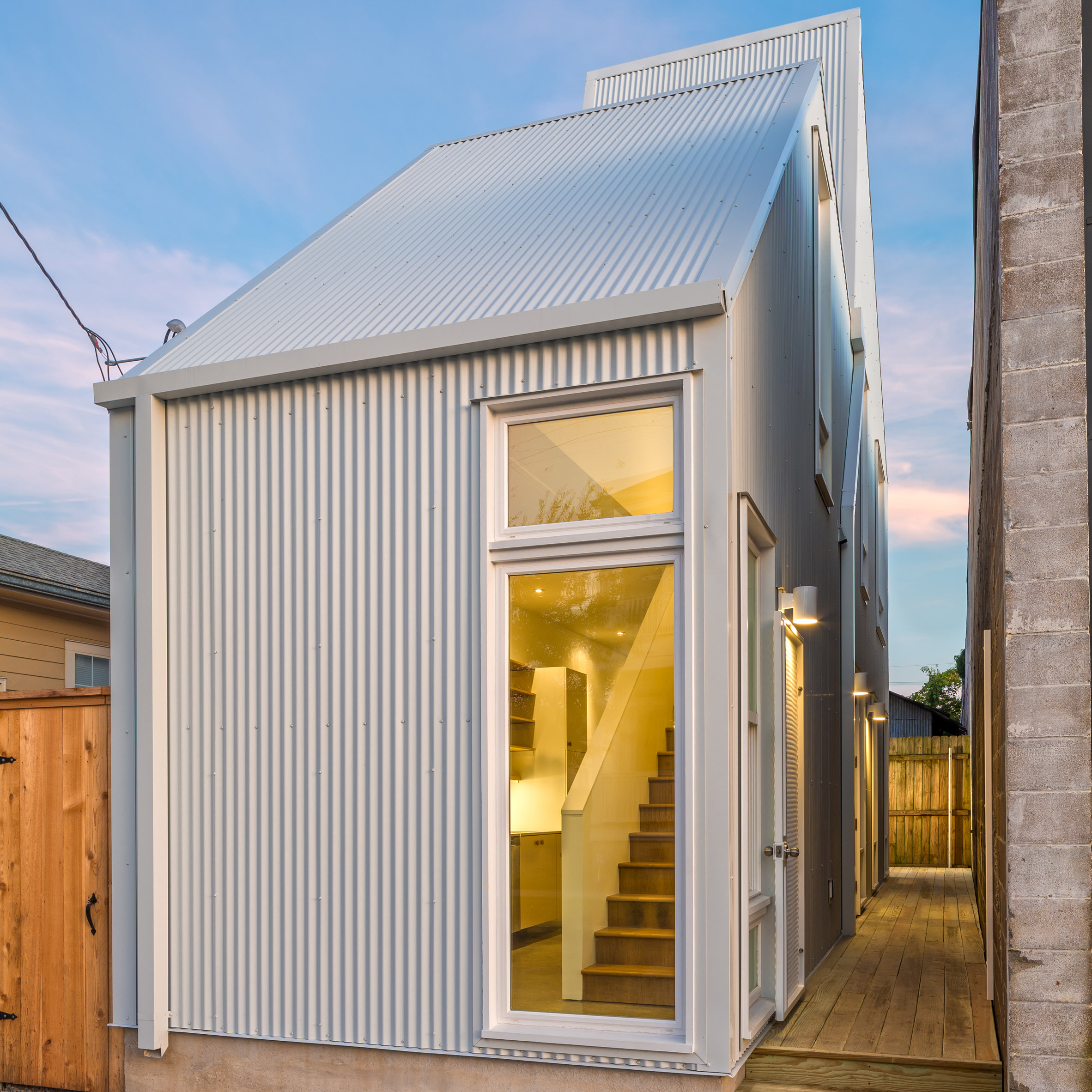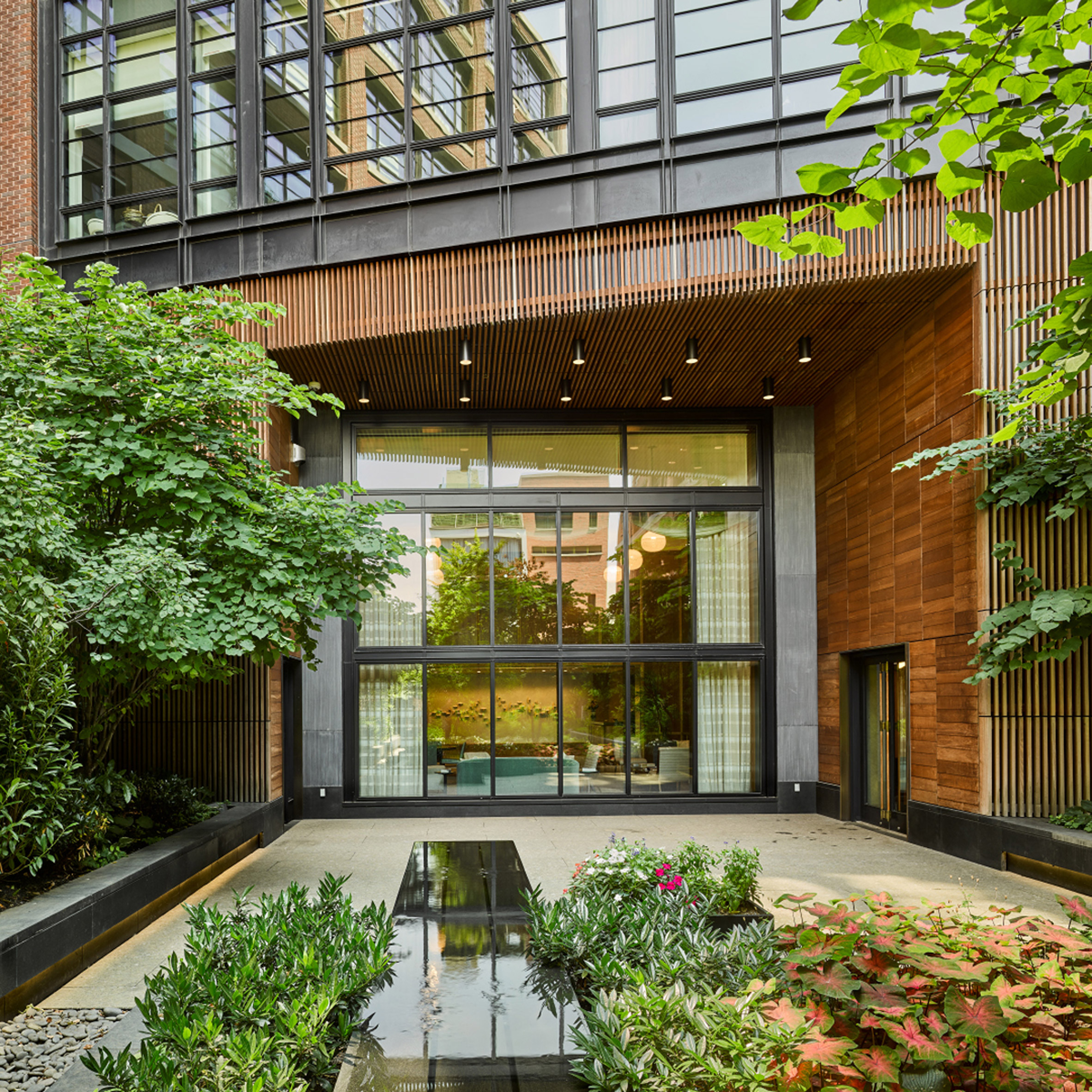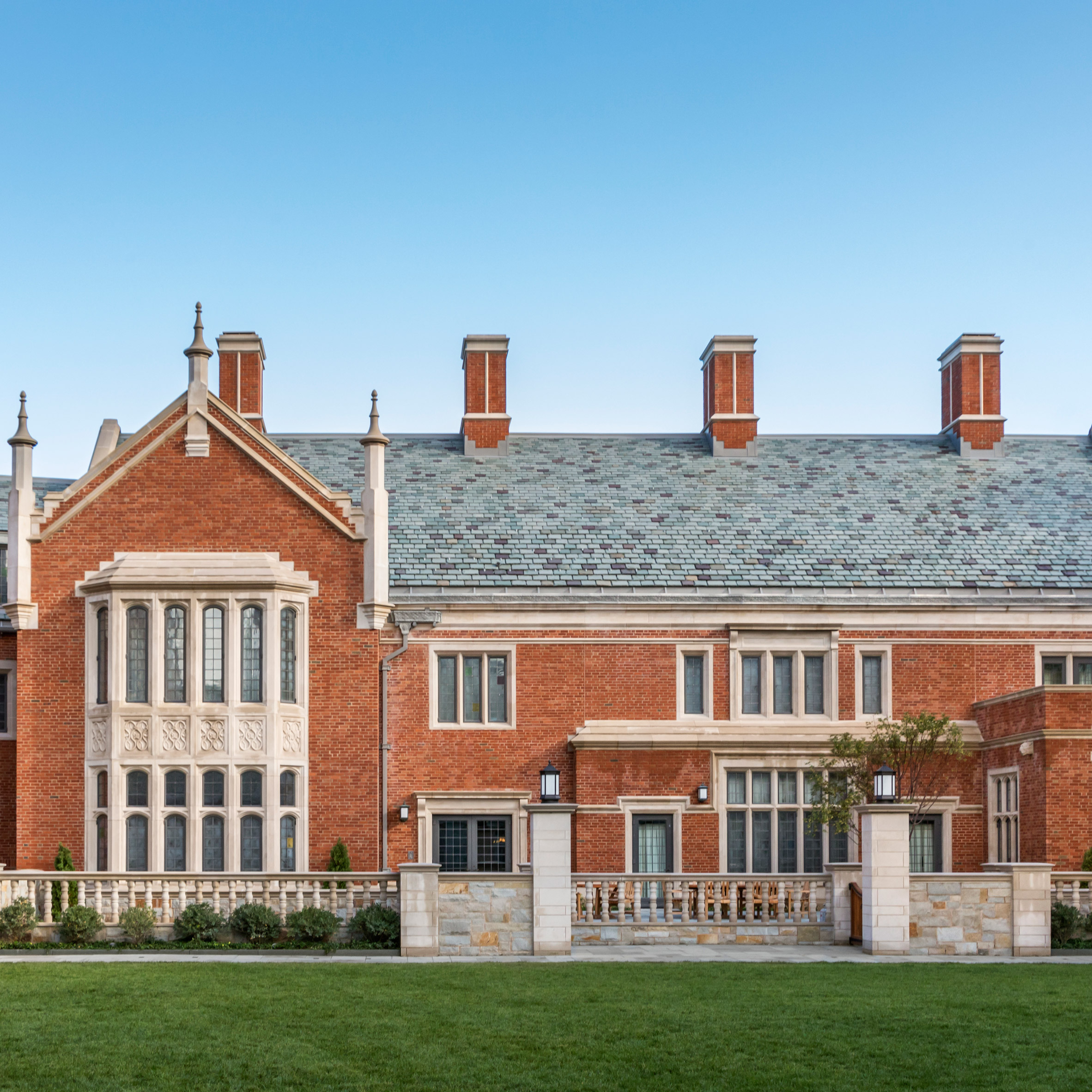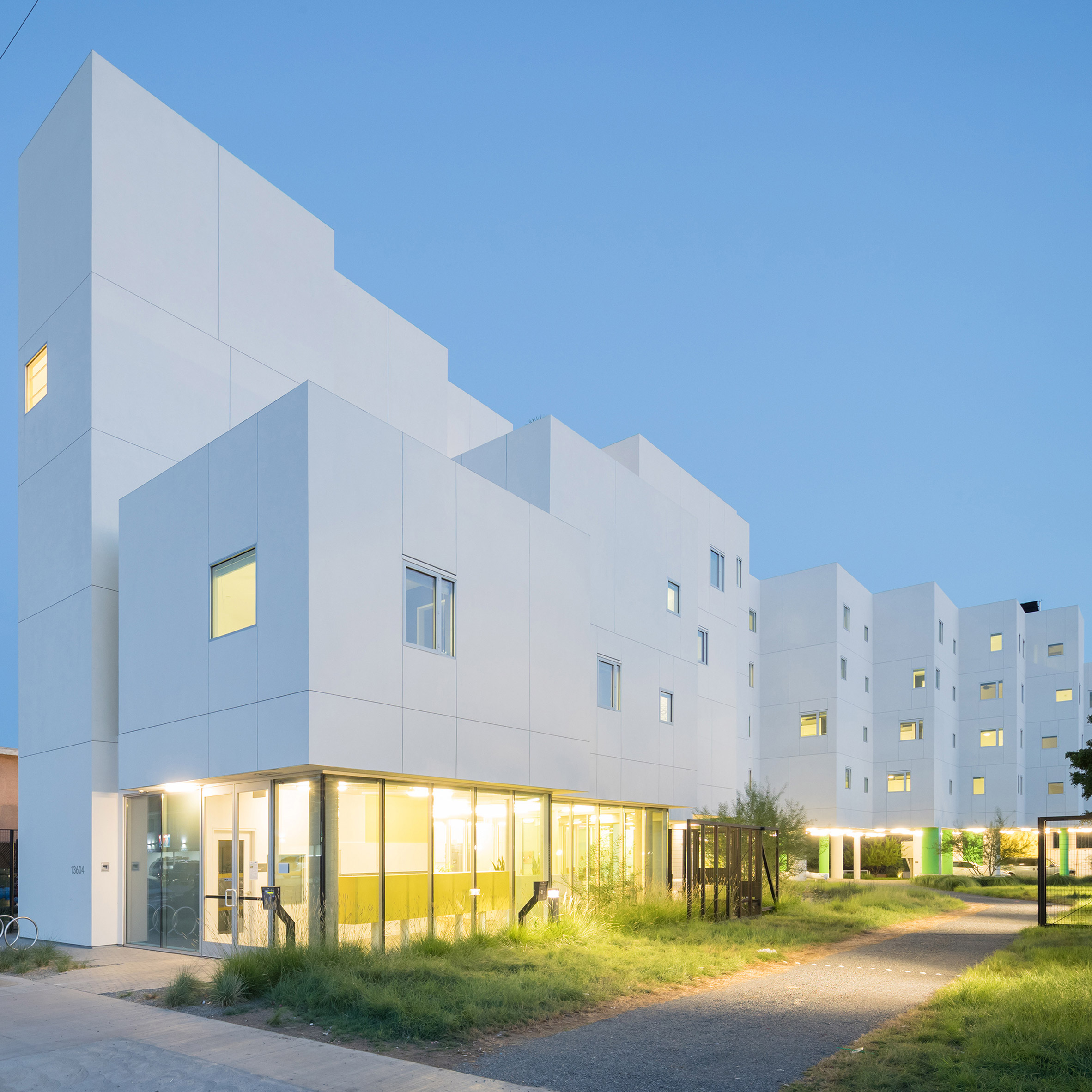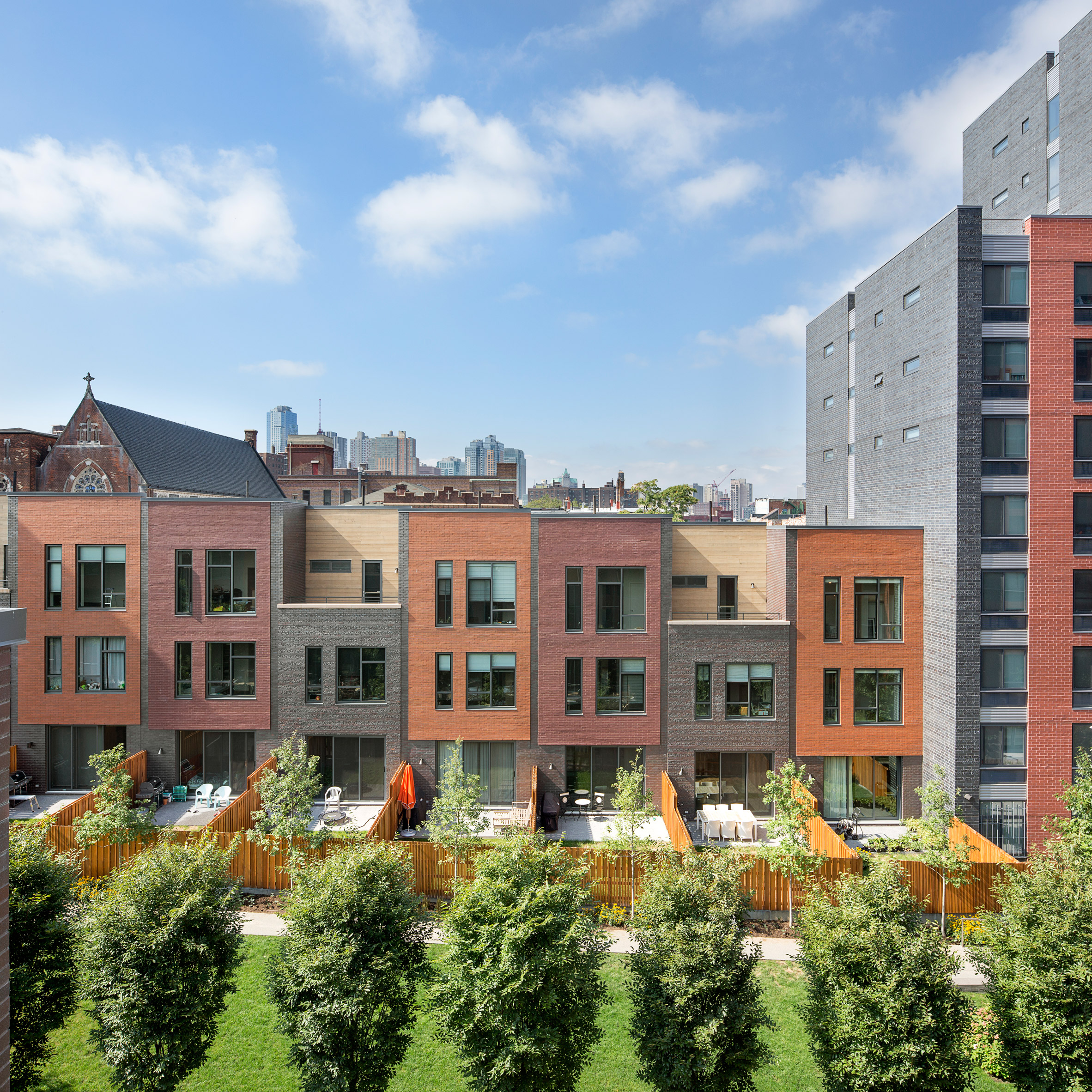The American Institute of Architects has announced its 11 most important residential projects by 2018, including a house in New York that takes design elements from its past as a Quaker settlement and a remote residence with wood and light glass in rural Ontario.
The AIA 2018 Housing Awards recognize the most notable residential projects built last year. The winners of this year's award range from small homes to housing complexes and student residences, and were selected by a jury of industry leaders.
Among the 11 awarded projects is a monochrome apartment complex in Los Angeles with an internal staircase and a dark-white patio, a spacious residence in the Arizona desert with patterned brick walls and outdoor areas, and a narrow house three stories with an irregular roof in New Orleans.
Read on to get a general description of each AIA project:
Underhill, Matinecock, New York by Bates Masi Architects
Inspired by the history of the location, an early Quaker settlement, the design of this family home is based on the principles of simplicity, humility and inner focus. The house is divided into a series of modest gabled structures, each facing inland in its own landscaped courtyard instead of addressing the surrounding neighbors. Each interior space is connected to the outside on two sides. From selected points of view, one can see through multiple spaces and patios to framed views beyond.
Each volume has a sculpted roof that channels light and air to the center of the structure. The detail of the materials articulates this organization. Oak floor and ceiling boards radiate outward from each central courtyard. Metal straps on the roof further emphasize this geometry and act as a device to organize lighting and audiovisual equipment throughout the house. The Quaker values of simplicity and craftsmanship link the new home to the community.
The Bear Stand, Gooderham, Ontario by Bohlin Cywinski Jackson with Bohlin Grauman Miller Architects
Located three hours northeast of Toronto, this 3,300 square foot retreat is carefully located along the shores of Lake Contau in a remote, seasonally isolated forest that spans nearly 100 acres. In recalling the childhood adventures that explore the surrounding lakes and forests, customers wanted to share this unique place with others by creating a place of pardon to rent to families on vacation.
The two-story residence extends parallel to the lake and a granite rock wall that rises to the south, with primary living and dining spaces at ground level spilling outwards, and spaces to sleep and bathe in the superior to capture ample views of the lake and the surrounding forest. The retreat serves as the starting point for an expansive private trail network designed by the client. A series of delicate docks for canoes and boardwalks weave shallow swamps with perches in the hills, which encourages exploration by both water and land.
Ghost Wash House, Paradise Valley, Arizona by A-I-R Architects
The Ghost Wash House, located along the side of the north side of Camelback Mountain, is flanked by two washes that move rainwater down the mountain. Two fallen brick bars parallel to the east and west wash frames a third topographic condition, or "Phantom Wash," which extends through the center of the site. The east bar contains the "support" programs of the house: garages, kitchen, family dining room, etc. The west bar protects the occupants from the intense setting sun.
Mariposa1038, Los Angeles, California by Lorcan O'Herlihy Architects
As one of the densest neighborhoods in the country, the Koreatown of Los Angeles is at the forefront of the changing modes of contemporary urban life. The design for Mariposa1038 plays with the density of this growing area with a pure cube extruded to fit its batch, and then formed to make a gesture towards the public street and the surrounding context.
To blur the distinction between public and private spheres, the design pushes the cube inward on each side, creating curves that provide relief from the sidewalk and return portions of the earth plane to the public domain. The carved opening creates a central focal point for the interior organization of the building and allows natural light to enter the courtyard. The ribbon of the patio attracts the view upwards and creates continuity from floor to floor. All units have outside access and can be cooled by cross ventilation. A rooftop terrace offers additional outdoor space and views of the skyline.
South 5th Residence, Austin, Texas by Alterstudio
South 5th Residence slips carelessly into Austin's eclectic Bouldin neighborhood and skillfully negotiates Austin's zoning, envelope and critical area requirements. A rare 25-inch Durand Oak and an unexpectedly steep escarpment created a powerful circumstance for a house that emphasizes the view and a dynamic spatial sequence, while at the same time being an abstract backdrop for the chance of light and circumstance.
The visitor arrives at a green patio under the majestic oak. A thin wall of four-inch gabions in the street, evergreen plantations and a perforated screen, cut corrugated to the south, provide varying degrees of privacy and animation for the whole. A transparent living room looms over the steep fall and reveals an expansive panorama. The visceral textures of concrete, steel with mill finish and rough stucco are presented against the finely detailed masonry and the walls of the custom glazed windows, which are framed with oak and white steel sawed by slit to form mullions of protective plate .
Linea Residence G, Palm Springs, California by Poon Design Inc
This production house sets a new standard for the housing industry in speculative areas. For the public that buys homes, Residence G offers a production house that matches the presence of personalized luxury properties. And Residence G does so at a record construction cost: a quarter of the cost per square foot of high-end residences seen throughout Southern California.
Clarity and precision, minimal lines, glass walls, measured proportions and the cubist mass provide an iconic architecture that opposes the predictable Taco-Bell style or the cliché of the mid-century modern residences of the area . In recent years, the G residence and other sustainable home designs by this architect have been built and sold, totaling more than 200 homes completed in the Palm Springs area. Under the thesis of "Modern for the Masses", the architect's agenda has ignited a completely new movement of design and demography in the region.
3106 St Thomas, New Orleans, Louisiana, by the Jonathan Tate Office (OJT)
The first trial site for the Starter Home thesis, 3106 St Thomas is an undersized lot in the Irish Channel neighborhood. Technically, a historic district, the Irish Channel is, in fact, very diverse in the character of its built environment, full of low-density historical housing as well as regional industrial infrastructure. According to Starter Home's argument, the site is both a legal definition, an embedded history, an activity record and a physical entity.
An Initial Home does not expect tabula rasa and, in fact, it is based on the specificities of the site to function in the best way, financially, urbanistically and spatially. The overlap of the zoning, both the impediment and the opportunity, guides the design process, but also provides the potential of the site as a starting opportunity for the home. With this in mind, zoning variations were not sought and, in its design, the 3106 seeks to take advantage of its preconditions: the adjacency to a warehouse and a two-family house, a very restricted, long and narrow footprint and a fairly generous maximum Height of 40 feet.
150 Charles Street, New York, New York by Cookfox Architects
Bordering the historic district of West Village, 150 Charles Street dominates the expansion of the Hudson River bank. In this exceptional site, we imagine a building connected to nature and carefully integrated into its historic neighborhood. To preserve the character of the street, we preserve the original structure of Whitehall Warehouse. In the upper part there is a contextual backspace tower with a series of landscaped waterfall terraces designed as a "fifth façade" to provide armor for nature.
Highlighting natural materials of brick, wood and stone, the architectural expressions are reminiscent of the surroundings of the West Village. The design proposal required the approval of several community meetings and resulted in a zoning change that allows the new contextual mass scheme with the promise of "superior landscaping". More than half of the area of the site is now covered by gardens, and each resident has direct access to nature through private or shared terraces and the lush central courtyard.
Yale University, New Haven, Connecticut by Robert A M Stern Architects
Located in a triangular site north of the Cross Campus quadrangle at Yale University, near Science Hill, Benjamin Franklin College and Pauli Murray College carry on the Gothic style established by James Gamble Rogers in the 1920s and 1930s with its Quadrangle Harkness Memorial and six of the ten original residences. Schools Organized around nine quadrilaterals and 16 arched corridors, the new universities have a capacity for 904 student beds in different types of suites.
Each university has its own dining room with capacity for 300 people, a common room, a library, a staff room and provides access to shared recreation spaces of a lower level. Prospect Walk, a landscaped pedestrian street that divides the site, provides east-west circulation and invites students and neighbors to pass between the universities. Three new towers serve as vertical markers for the campus, giving the new universities a presence on the Yale skyline and visually connecting them to the Harkness Tower in the center of the campus.
Crest Apartments, Van Nuys, California by Michael Maltzan Architecture
Crest Apartments is a permanent supportive housing project that provides 64 homes and comprehensive support services in place for the most vulnerable homeless people in Los Angeles County, including 23 homeless veterans. Located in the suburb of Van Nuys, California, the 45,000-square-foot LEED Platinum project includes studio apartments and community spaces for residents, such as social services offices, a community kitchen, laundry room, resident living room, and community garden on the ground floor.
A highly sustainable green landscape extends throughout the site, while the arched shape of the building and the open terraces float above. The reception lobby is located at the front to receive residents and visitors and to create an active connection to the street. The welcoming and bright spaces throughout the building form a network of healthy community spaces that connect residents. The four upper residential floors of the studio apartments include large windows and are connected by outdoor corridors that introduce vibrant colors, natural light, cross ventilation and views of the surrounding city.
Navy Green, Brooklyn, New York by FXCollaborative
Navy Green is a cornerstone and a catalyst for equitable reinvestment in the Wallabout neighborhood of Brooklyn. The project transformed the historic site of the Navy Brigade into a residential and commercial development of 450,000 square feet that covers almost an entire block of the city. With LEED Silver certification for neighborhood development, Navy Green sets a benchmark for neighborhood-level architecture by employing a design that responds to the context and is environmentally sustainable to achieve a social and economic balance in urban growth.
The neighborhood complex within a neighborhood is comprised of four multi-family residential buildings enrolled in various affordable and supportive housing programs, two rows of townhomes at market prices, community facilities and commercial premises, and a central common green space. The interior turf, the "green" Navy Green, is open and directly accessible to all residents, an oasis in the private neighborhood of parks that acts as a social aggregator.
